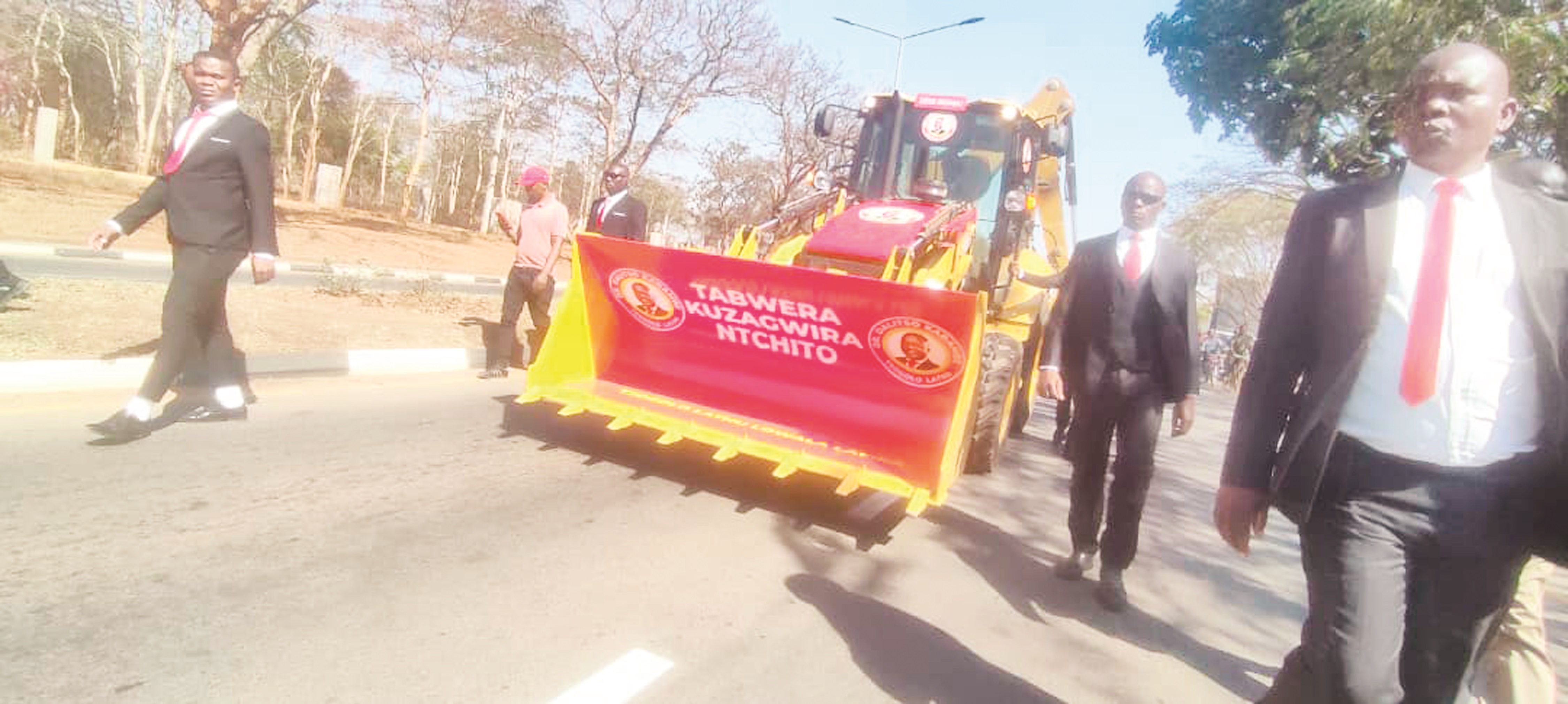
Mining & Trade News
Malawi Online News
Top Stories
Mining
Election fever grips mineral sector
August 07, 2025 / Marcel Chimwala

UTM party torch bearer Dalitso Kabambe drove a grader to present nomination papers
As Malawi votes in general electios to elect President, Members of Parliament and Ward Councillors on September 16, election fever has gripped the minerals sector with many players hoping that the newly elected administration will address numerous bottlenecks hindering the growth of the sector.
State President Lazarus McCarthy Chakwera who will lead the governing Malawi Congress Party in the polls is facing strong challenge from immediate past President Peter Mutharika who is leading the main opposition Democratic Progressive Party (DPP), former Reserve Bank Governor Dalitso Kabambe representing UTM Party, former President Joyce Banda of People’s Party and former cabinet minister Atupele Muluzi of the United Democratic Front in an election where a total of 22 presidential hopefuls collected nomination papers from the Electoral Commission.
Malawi’s political party manifestos are aligned to the national vision Malawi 2063 which has agriculture, mining and tourism as the main enablers of economic development implying that all the political administrations that have the chance to take over government through the polls will prioritise mineral sector development to spur industrial development alongside agriculture.
Malawi has no large scale mine in operation with the only large scale mine that opened after the country’s attained Independence from the British Colonialists in 1964, the Kayelekera Uranium Mine in Karonga, set to resume operations this month.
ASX-listed Lotus Resources is at an advanced stage to resume yellow cake production from the mine which previous owner Paladin opened in 2009 but put it under care and maintenance in 2014 following a sharp decline in the prices of the energy mineral on the world market in light of the Fukushima Nuclear disaster which resulted in the closure of a number of nuclear reactors mostly in Asia.
The minerals sector expects the coming administration to support the opening of Kayelekera and other large-scale mines in pipeline such as Kasiya Rutile-Graphite in Lilongwe, Kangankunde Rare Earth in Balaka, Songwe Hill Rare Earth in Phalombe and Kanyika Niobium in Mzimba.
Investors in these large-scale mining projects have mostly complained of delays by the Government to issue important documents such as licenses, permits and conclude negotiations on mining development agreements.
There have also been complaints from medium scale miners in cement and coal production who seek protection from government from unfair competition from imports that are threatening survival of their businesses.
The other main concern for the oncoming political administration to look at in order to develop the minerals sector is the issue of power supply disruptions which has remained a thorn in the flesh for the industry for many years.
There are also expectations that Government will support development of the Artisanal and Small-Scale Mining (ASM) by formalising the sector, offering business and marketing training to the miners, and setting up a development fund to provide financial support to the ASMs in form of loans so that they are able to use advanced equipment for extraction and value addition of minerals.































